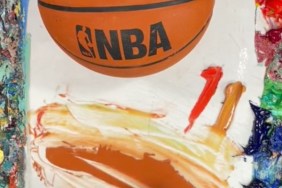Many art galleries have that one painting that plays the diva while other work on display offers an appealing supporting cast. The star brings in the crowds, and those people disperse to the other exhibits to expand their art appreciation.
At the Neue Galerie in New York, the leading lady is a movie star. Made popular by the Dame Helen Mirren film, The Woman in Gold, the painting lives under that name in popular culture. However, its real title is “Adele Bloch-Bauer I.” Painted by the great Gustav Klimt in 1907 during the artist’s Gold Period, the work is one of his masterpieces.
Klimt was commissioned to do the portrait of Bloch-Bauer by her husband. The film that brought it to mass media attention didn’t deal with the Klimt or the painting’s origin, but rather the battle of Maria Altmann to reclaim the work from the Austrian government in 2004.
Related: MOMA Restores Matisse Cut-Out, ‘Swimming Pool’
Adele Bloch-Bauer was Altmann’s aunt, and the painting was in their family’s collection. The Nazis stole the painting during World War II and, after the fall of the Third Reich, the restored Austrian government claimed the piece. Altmann took her claim on “Adele Bloch-Bauer I” to the U.S. Supreme Court, eventually winning her painting back. She eventually sold the Klimt to its current home with the Neue Galerie for a then-record $135 million. It served as the central point of Neue’s recent Klimt exhibit for the last several months.
Crowds gather around the work inside the Neue, some sitting and others moving from side to side to gain the closest look possible. While the dominance of actual layered gold and silver on the canvas can’t help but capture attention, it’s the intricate and seemingly endless detailing of the work that holds the eye.
Its most perplexing aspect must be the face of the woman herself. Painted with almost photographic precision, the expression is at once pensive and sad, regal and introspective. From the longing in her eyes to the uncomfortable and nervous posture, the lady looks mysteriously uncomfortable.
A nearby patron, a Belinda from Chelsea, wonders if Klimt held desire or disdain for his subject.
“Did he desire her, but couldn’t have her?” she asks herself. “Did he resent her wealth as the thing that keeps them apart? In one sense, he’s exalting her with all the finery. But, he places her amongst all of that with a face that’s unhappy — pale and seeming almost unhealthy.”
“Still, there’s desire in her eyes. You have to wonder if that desire is the painter’s because he can’t have his subject. Or, Is he fantasizing or imagining her impossible desire for him?”

“All artists are in love with a model during the hours, days, weeks and months they spend with them,” Madigan says. “When you study, observe and scrutinize someone, you look past the outer to find the inner.”
“Notice how her body tends to get lost in the composition. And it’s her face that stands out. What he’s doing is putting her above the richness of the fabric so that you are drawn first to her human beauty.”
Madigan believes he highlighted her as the only human element in the work.
“Study the piece. Look at the intrinsic design of the dress and gold leaf. Then look at the simple, naturalist style he paints her.”
“Her husband was very rich,” Madigan adds. “He commissioned the painting, so — like all rich patrons — he wants to have HIS wealth shown off. Include his wife in that.”
“Klimt was something of a bohemian. I think he fell for everyone out of his league. He was part of the Viennese Secession movement that was formerly rejecting everything that came before it. He probably saw this rich woman as idealized symbol of unrequited love.”
While the Klimt exhibit build around “Adele Bloch-Bauer I” is closing, its centerpiece painting will remain on permanent display.
The Neue will now move on to its new exhibit – Berlin Metropolis: 1918-1933. It’s a multimedia exploration of the capital city in its pre-WWII, Weimar Period – an era that saw the emergence of Expressionism and other art movements across the arts.








